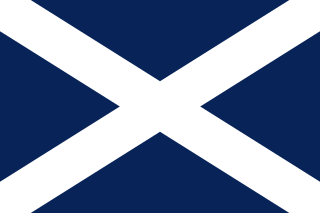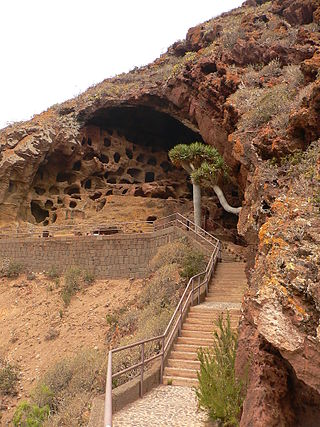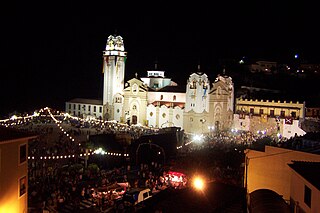
Gran Canaria, also Grand Canary Island, is the third-largest and second-most-populous island of the Canary Islands, an archipelago off the Atlantic coast of Northwest Africa and is part of Spain. As of 2023 the island had a population of 862,893 that constitutes approximately 40% of the population of the archipelago. Las Palmas de Gran Canaria, the capital of the island, is the biggest city of the Canary Islands and the ninth of Spain.

Tenerife is the largest and most populous island of the Canary Islands. It is home to 42.9% of the total population of the archipelago. With a land area of 2,034.38 square kilometres (785.48 sq mi) and a population of 948,815 inhabitants as of January 2023, it is also the most populous island of Spain and of Macaronesia.

Santa Cruz de Tenerife, commonly abbreviated as Santa Cruz, is a city, the capital of the island of Tenerife, Province of Santa Cruz de Tenerife, and one of the capitals of the Canary Islands, along with Las Palmas. Santa Cruz has a population of 206,593 (2013) within its administrative limits. The urban zone of Santa Cruz extends beyond the city limits with a population of 507,306 and 538,000 within urban area. It is the second largest city in the Canary Islands and the main city on the island of Tenerife, with nearly half of the island's population living in or around it.

Garafía is a municipality in the island of La Palma, Santa Cruz de Tenerife. Located in the northwest of the island, in the middle of two whims of nature: the ravines of Franceses bordering Barlovento and Izcagua by the South, bordering Punta Gorda. The administrative capital, home to the City Council, is called Santo Domingo; its parish church, Iglesia de Nuestra Señora de La Luz dates back to the 16th century. Garafía has a length of 25.50 km coastline.

Candelaria, also Villa Mariana de Candelaria, is a municipality and city in the eastern part of the island of Tenerife in the Province of Santa Cruz de Tenerife, in the Canary Islands, Spain. The city is located on the coast, 17 km southwest of Santa Cruz de Tenerife. The population is 25,140 (2010), and the area is 49.18 km².

Vilaflor is a municipality and village in the south-central part of the island of Tenerife, one of the Canary Islands, and part of Santa Cruz de Tenerife (province), Spain. Vilaflor, with an altitude of 1,400 m, is the highest village on Tenerife, situated south of the Teide volcano. It is located 7 km north of San Miguel de Abona and 51 km southwest of the island's capital Santa Cruz de Tenerife. The population is 1,645 (2018) and the area is 56.26 km².

Santa Cruz de la Palma is a city and a municipality on the east coast of the island of La Palma in the province of Santa Cruz de Tenerife of the Canary Islands. Santa Cruz de la Palma is the second-largest city and is the capital of the island. It is along an old lava flow coming from the Caldereta, a volcano just south of the city. Santa Cruz de La Palma has the privilege of having the first democratically elected town hall in Spain.

Peter of Saint Joseph de Betancur y Gonzáles, OFB, also called Hermano Pedro de San José Betancurt or more simply Peter de Betancurt, Hermano Pedro, Santo Hermano Pedro, or San Pedro de Vilaflor, was a Spanish saint and missionary in Guatemala.

El Médano is a town in the municipality of Granadilla de Abona, on the island of Tenerife, one of the Canary Islands. It is located about 11 kilometers from the town of Granadilla, reaching an average altitude of 75 meters above sea level.

The Virgin of Candelaria or Our Lady of Candle (Tagalog: Mahal na Birhen ng Candelaria, popularly called La Morenita, celebrates the Virgin Mary on the island of Tenerife, one of the Canary Islands. The center of worship is located in the city of Candelaria in Tenerife. She is depicted as a Black Madonna. The "Royal Basilica Marian Shrine of Our Lady of Candelaria" is considered the main church dedicated to the Virgin Mary in the Canary Islands and she is the patroness saint of the Canary Islands. Her feast is celebrated on February 2 and August 15, the patronal feast of the Canary Islands.

Cueva de Achbinico, also called cave of San Blas is a Roman Catholic church and cave located in Candelaria, Tenerife, Canary Islands (Spain).

Amaro Rodríguez-Felipe y Tejera Machado, also known as Amaro Pargo, was a Spanish privateer and slave trader. He was one of the most well-known Spanish privateers during the Golden Age of Piracy. Pargo was noted for his commercial activities and for his frequent religious donations and aid to the poor. In his role as a privateer, he targeted trade routes between Cádiz and the Caribbean, on several occasions attacking British and Dutch merchant ships, earning recognition in his time as a hero and coming to be regarded as "the Spanish equivalent of Francis Drake". He was declared a Caballero hidalgo in 1725 and obtained certification of nobility and royal arms in 1727.

The Sanctuary of the Santo Hermano Pedro is a pilgrimage temple located in the town of Vilaflor, south of the island of Tenerife. The shrine is dedicated to Saint Peter of Saint Joseph Betancur, the first Saint of the Canary Islands.

The Cave of the Guanches, or Archaeological area of the Cave of the Guanches, is an important archaeological site located in the north of the island of Tenerife.

Valerón's "monastery" is an archaeological site on the Spanish island of Grand Canary, in the municipality of Santa Maria de Guia, on Valerón's cliff. It is the largest pre-Hispanic collective granary built before Roman times and used by the island's inhabitants until the conquest of the island at the end of the 15th century.

Cueva del Agua is a small village of the Spanish municipality of Garafia in the north-east of the island of La Palma, province of Santa Cruz de Tenerife, in the Canary Islands off the Moroccan coast.
As in the rest of Spain, the majority religion in the Canary Islands is the Catholic Church. The Catholic religion has been the majority since the Conquest of the Canary Islands in the fifteenth century. This religion would largely replace the Canarian aboriginal religion through the prohibition of the latter and syncretism. According to a survey conducted in 2019, Canary Islands is the fifth autonomous community in Spain with the highest percentage of people who declare themselves to be Catholics after the Region of Murcia, Extremadura, Galicia, Aragon, and Castile and León. 76.7% of the population is Catholic.

The pilgrimage to Candelaria is a religious march that takes place every year on the night of August 14 to 15 in Tenerife towards the municipality of Candelaria where the image is located. of the Patroness of the Canary Islands, the Virgin of Candelaria. It is one of the most popular events in the Canary Islands.

The Hermano Pedro's Way is an ancient pilgrimage route, linked to the figure of Saint Peter of Saint Joseph de Betancur, who is the first Saint of the Canary Islands. It runs approximately 19 kilometers between the municipalities of Vilaflor, San Miguel de Abona and Granadilla de Abona, in the southeast of the island of Tenerife (Spain).



















